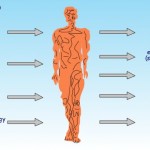

No time for boring cardio?Join the club.Metabolic training is the “go-to” method for fast fat loss results and getting the lean, athletic look. Cut your training time in half and triple your fat burning capacity, compared to traditional cardio methods.3 Tips for a Faster WorkoutMetabolic Resistance TrainingI love to shorten everything (it’s the Aussie in me), so you can simply refer to it as “MRT”. There is a bit of debate out there as to what metabolic resistance training is, and I can guarantee every trainer has a different definition of MRT for you. At Fat Loss Accelerators, you will always get correct, up-to-date information on this topic.Metabolic Resistance Training involves non-competing supersets/circuits of multi-joint exercises with resistance in the form of bodyweight, dumbbells, Kettlebells combined with minimal rest periods. That’s our underlying theme. The goal is to maximize calorie burn and save you at least 15 minutes training time.The major draw card is this can elicit a physiological response similar to that of interval training, accelerate your fat loss results and let me tell you, it’s nothing like slow, steady cardio.
More –
3 Tips For a Faster Workout | Fat Loss Accelerators





 For now classes are 6pm and 640pm at 2840 Wildwood st in the Boise Cloggers studio.
Book your class NOW!
click this ==>
For now classes are 6pm and 640pm at 2840 Wildwood st in the Boise Cloggers studio.
Book your class NOW!
click this ==>








